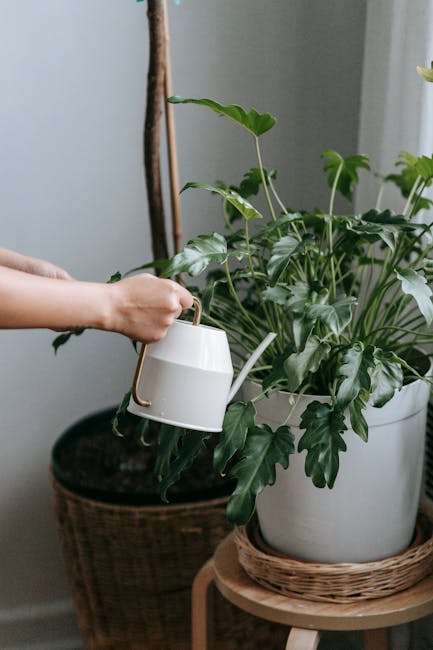Watering Indoor Plants: How to Keep Them Healthy 🌿
Indoor plants are a fantastic way to bring a touch of nature into your home, improve air quality, and add a splash of color to your decor. However, keeping them healthy and thriving can sometimes be a challenge, especially when it comes to watering. In this guide, we’ll explore the best practices for watering your indoor plants, ensuring they remain vibrant and healthy. Let’s dive in!
Table of Contents
1. Understanding Your Plant’s Water Needs 🌱
2. Best Practices for Watering Indoor Plants 💧
3. Common Mistakes to Avoid 🚫
4. Seasonal Watering Tips 🍂🌞
5. Conclusion: Water with Care and Love 💖
6. FAQs: Your Watering Questions Answered ❓
Understanding Your Plant’s Water Needs 🌱
Each plant is unique and has its own specific water requirements. The key to healthy indoor plants is understanding these needs. Some plants, like succulents, prefer drier conditions, while others, like ferns, thrive in constantly moist soil. A good starting point is to research your specific plant species or check the plant label for guidance.
Best Practices for Watering Indoor Plants 💧
Here are some tried-and-true tips to ensure your plants get the perfect amount of water:
1. Check the Soil: Before watering, stick your finger about an inch into the soil. If it feels dry, it’s time to water. If it’s still moist, wait a few more days.
2. Use the Right Amount: Overwatering is a common issue. Ensure water drains through the pot’s bottom to avoid root rot.
3. Water in the Morning: Watering early in the day allows the plant to absorb moisture before the temperature rises, minimizing evaporation.
Common Mistakes to Avoid 🚫
Avoid these pitfalls to keep your plants happy:
1. Using Cold Water: Plants prefer room temperature water. Cold water can shock their roots.
2. Neglecting Drainage: Ensure your pots have drainage holes to prevent water from pooling at the bottom.
3. Ignoring the Plant’s Environment: Humidity, temperature, and light can affect how much water a plant needs. Adjust your watering schedule accordingly.
Seasonal Watering Tips 🍂🌞
As seasons change, so do your plant’s watering needs:
Winter: Plants generally need less water due to lower light levels and cooler temperatures. Be cautious not to overwater.
Summer: Increased sunlight and heat may require more frequent watering. Monitor the soil moisture closely.
Conclusion: Water with Care and Love 💖
Watering indoor plants is more art than science. By understanding your plant’s needs and adjusting your approach as necessary, you can ensure your green companions flourish. Remember, plants are living beings that respond to care and attention. Happy watering! 🌼
FAQs: Your Watering Questions Answered ❓
How often should I water my indoor plants?
The frequency depends on the plant type, pot size, and environment. Generally, water when the top inch of soil is dry.
Can I use tap water for my plants?
Most houseplants are fine with tap water. However, if your water is heavily chlorinated, consider using filtered or rainwater.
Why are my plant’s leaves turning yellow?
Yellow leaves can indicate overwatering or underwatering. Check the soil moisture and adjust your watering habits accordingly.
Is misting beneficial for my plants?
Misting can increase humidity, which is beneficial for tropical plants. However, it shouldn’t replace regular watering.
Do all plants need the same amount of water?
No, each plant species has different water needs. Always research or consult a plant care guide for specific requirements.





